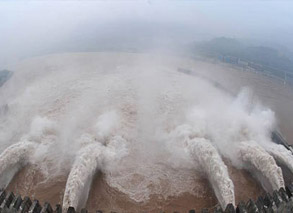Background: US arms sales a threat to national security
2010-01-31 09:06 BJT
The sale of weapons to Taiwan has always been a point of contention in Sino-US relationship since diplomatic ties were established on January 1st, 1979.
In April of that same year, then US President Jimmy Carter signed the Taiwan Relationship Act. It's considered the legal basis for US arms' sales to Taiwan. Although Washington promised to gradually reduce those sales, that has not happened.
In 1982, China and the US signed the "August 17" communique, in which America promised not to seek to carry out a long-term policy of arms sales to Taiwan, and to gradually reduce weapons sales to the island.
But the US did not follow through on the pledge made in the communique.
During the 1980s, though the scale of arms sales from the US to Taiwan was large, the weapons are mainly equipment that was out of date.
In the 1990s, the US intensified its containment policy toward China. The arm sales to Taiwan were not only large in scale, but also involved advanced weapons., such as F-16 fighters and Patriot Two missiles.
From 2000 to 2008, the focus of US global strategy has leaned more heavily to the Asia-Pacific Region. And the focus of the Taiwan strategy shifted from upholding Taiwan's defense capability, to maintaining the military balance across the Taiwan Strait, and to a positive defense allocation against China.
The US has been selling arms of a more aggressive nature to Taiwan, including weapons that can become components of integrated combat systems. And the sales are all focused on confronting specific targets. For instance, for China's SU-29 and SU-30 fighters, the US keeps upgrading the fighters they sell to Taiwan, and also increasing the types of air-to-air missiles.
Editor: Zhang Pengfei | Source: CCTV.comRelated stories
- China opposes US arms sales plan to Taiwan
- Chinese FM urges U.S. to stop selling weapons to Taiwan
- Chinese top legislature bashes U.S. planned arms sales to Taiwan
- China suspends military visits with U.S. over planned arms sales to Taiwan
- Chinese defense ministry lodges stern protest against U.S. arms sales to Taiwan

 Mail
Mail Share
Share Print
Print


 Video
Video









 2009 China Central Television. All Rights Reserved
2009 China Central Television. All Rights Reserved